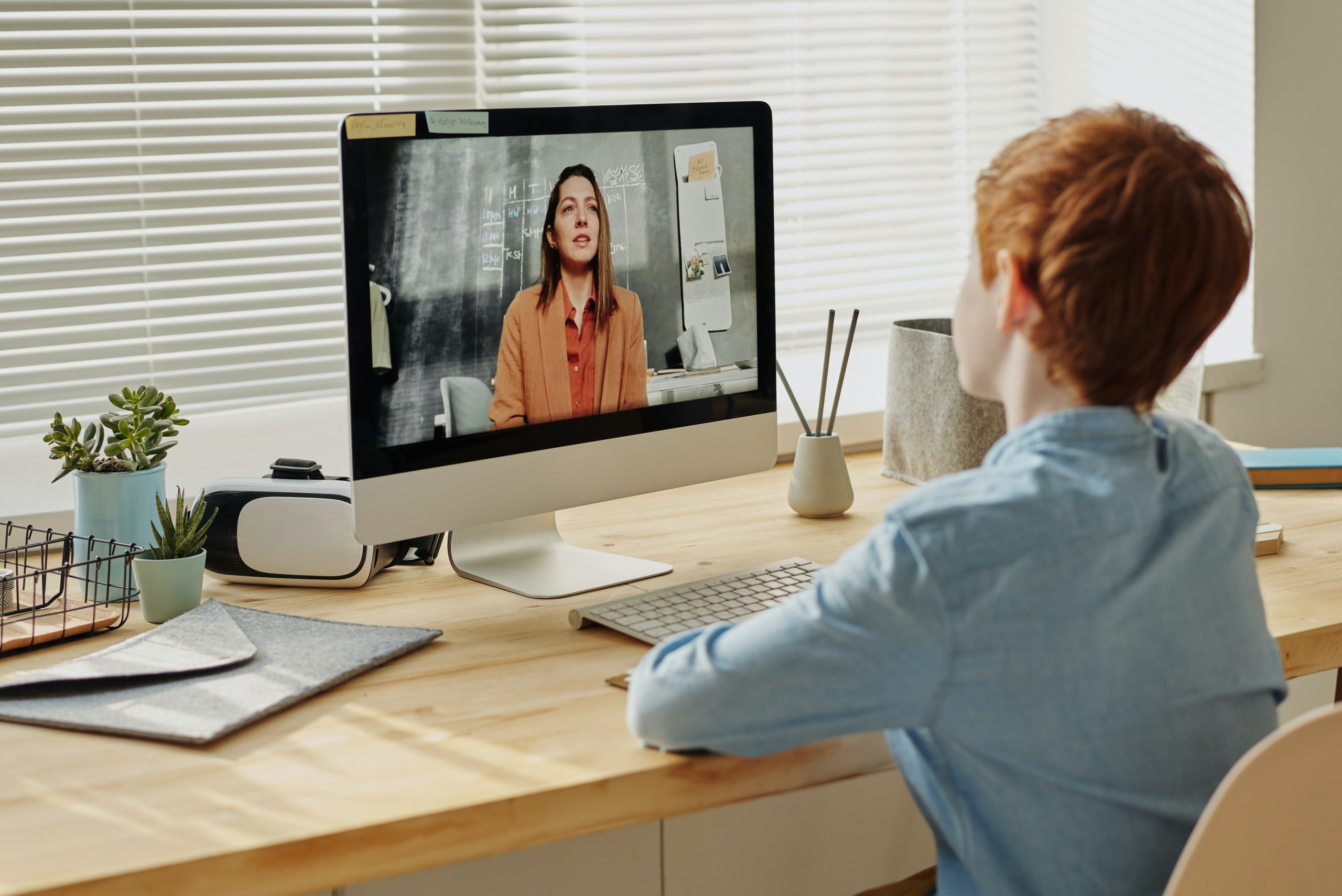The pandemic has impacted us all, changing our day-to-day routines, how we work, and how we interact with others. Many schools have opted for remote learning in some capacity. This means that our children are more likely to be online during school hours, increasing their daily exposure to the internet. While many parents teach their children to be cautious and aware online, the pandemic introduced a platform to our kids that they are likely unfamiliar with.
Zoom is a video conferencing software most schools use for online instruction. Students may be on this platform unsupervised, as many parents need to work. Your child’s teacher probably went over basic Zoom usage and etiquette with them. We wrote a blog, “How to Use Zoom, A Beginner’s Guide” to help you use the software properly.
The free Zoom plan allows up to 100 participants, so it is unlikely your student will be working with the paid version, especially since teachers and students who sign up with a school email address get unlimited meeting minutes. One great thing about Zoom is that you can use a smartphone to join and participate in meetings. For parents who work from home and don’t have additional computers, this feature means their child can use a cellphone to access Zoom if no computer is available.
Using Zoom also offers opportunities to teach your kids to come prepared for online classes.
Encourage them to sign on five to ten minutes early so that they can test out their microphone and video stream and troubleshoot any issues while in the waiting room. Signing on early ensures they enter the class quietly when it’s time to learn. Many teachers mute their students during parts of the lesson, but it is still important to test the mic in case they have a question, the teacher calls on them, or they are assigned to a small group. Your student can also visit https://zoom.us/test before class to make sure the internet connection is working. Turn off the “Join Before Host” option so that your student isn’t unsupervised in the Zoom classroom without their instructor. There is also a small chance a hacker could join before the teacher does.
While your student won’t need a Zoom account to join meetings, some teachers may take the extra step of restricting the meeting to authorized attendees. Authorized attendees must enter a password or login to Zoom. If your teacher does not implement the authorized attendees option, you may want to reach out and request it so that no surprise guests pop into class. Teachers should use random Zoom meeting IDs because they are more secure than using the same Zoom meeting ID for each class.
You may be wondering about the tools and functionality of Zoom. We’ll go over the basics so that you know what to expect.
- Screen sharing using Zoom: The teacher may share their screen to show documents, the agenda, or the lesson plan. Your student may share their screen to show their work.
- Zoom Whiteboard: The teacher grants students permission to write on a whiteboard to demonstrate their knowledge or attempt to solve a problem.
- Nonverbal feedback using Zoom: Students can raise their hand, agree, disagree, ask to go slower or faster, or signal that they need a break as well as a few other options.
- Zoom Breakout Room: The host assigns small groups so that students can discuss a topic together for a short amount of time.
- Zoom Chat: Make sure your student knows the chat box is public unless the teacher utilizes the private option, and that the content is archived. The chat is especially useful if their microphone isn’t working.
Teach your child to be respectful during class, not only when they are listening to their instructor, but also when they are assigned to small groups with their peers. While Zoom lessons are a new part of your child’s life, let them know that the basics of what is expected of them in class have not changed. This means wearing appropriate clothing, raising their hand to contribute, not interrupting or using vulgar language, and paying attention to the lesson.
Be aware that backgrounds should be appropriate and not distracting. Try to find somewhere quiet for the Zoom lesson. If your student needs to close the door, make sure it is not locked. If at all possible, your child should not hold Zoom lessons in their bedroom. Monitor their Zoom session when you can. If you work from home, you may find our blog, “Best Remote Working Tools During Covid-19” helpful.
One privacy concern many parents have is about data collection. If you want to keep your child’s data from being tracked and collected, use their school email for Zoom only.
Let your kids know that Zoom sessions are recorded, so they should be mindful of their actions. Make sure they only join Zoom meetings where they know the host. Educate your child on phishing scams to make sure they don’t open suspicious emails containing Zoom links. Your child should only open Zoom meetings that come directly from their teacher’s email.
Hopefully, you now feel better prepared for your child to use Zoom safely and effectively. Check out this parent’s guide to learn even more about Zoom. If you have any further questions about the functionality of the software, send an email to info@learningcomputer.com.
About the author: Sheri Holshouser is a marketing manager based in Dallas, Texas. In her free time, she likes to read science fiction novels and play with her pug Chloe. Learn more about her professional qualifications on LinkedIn.





